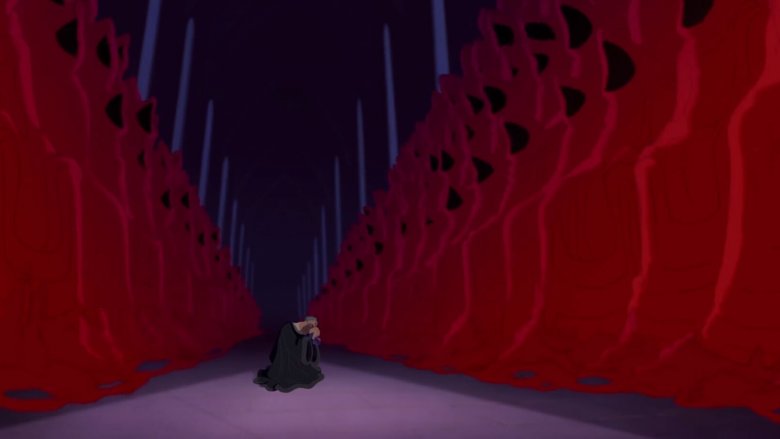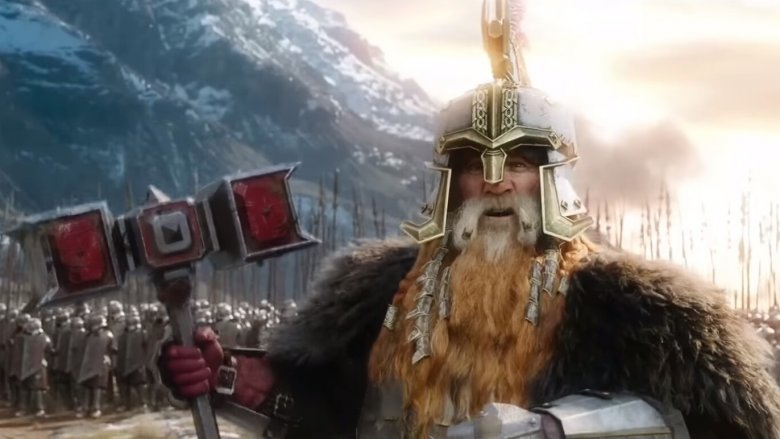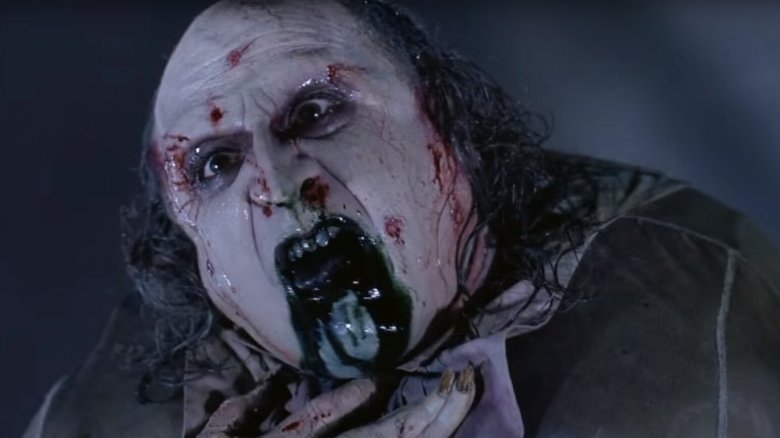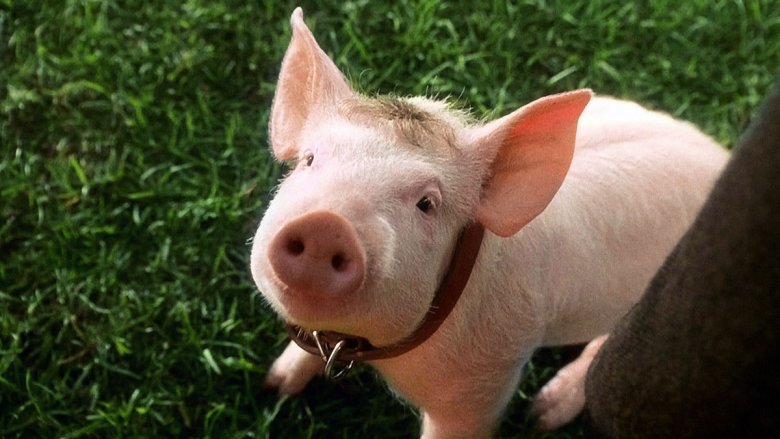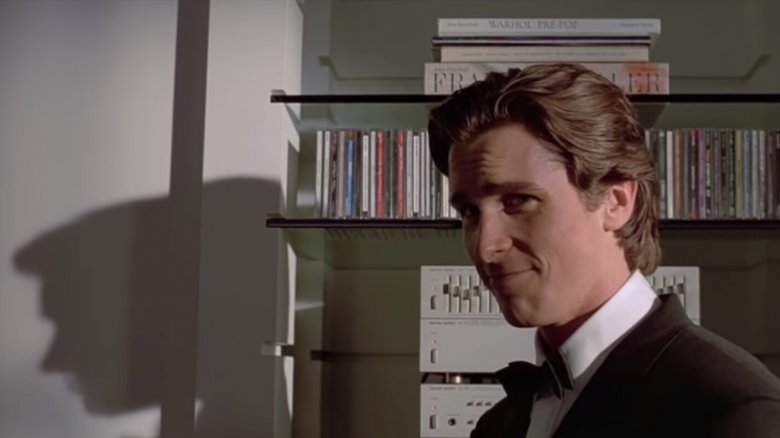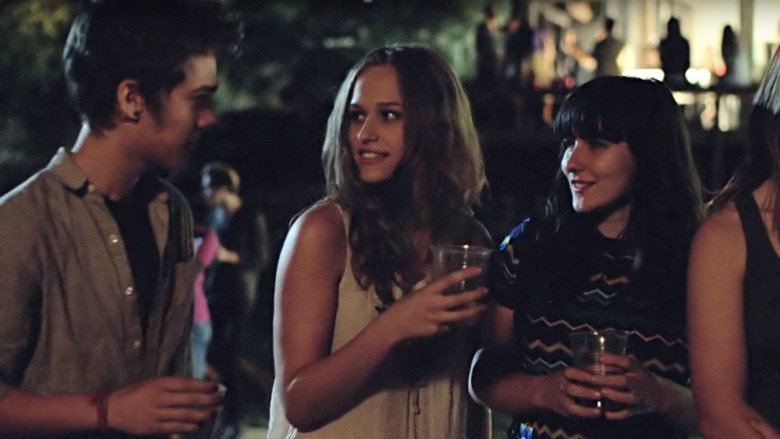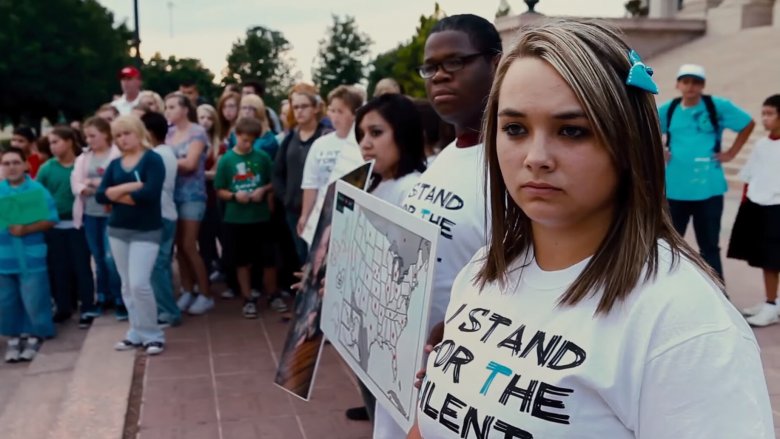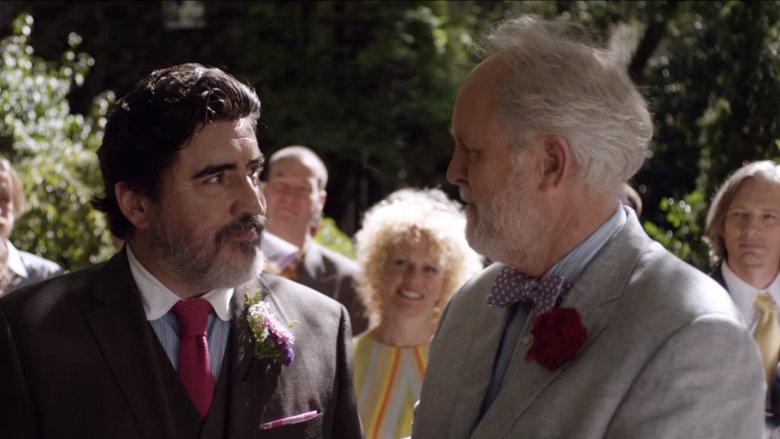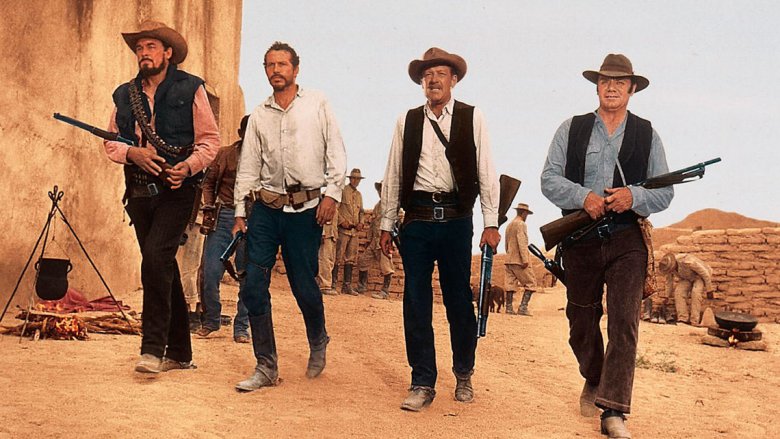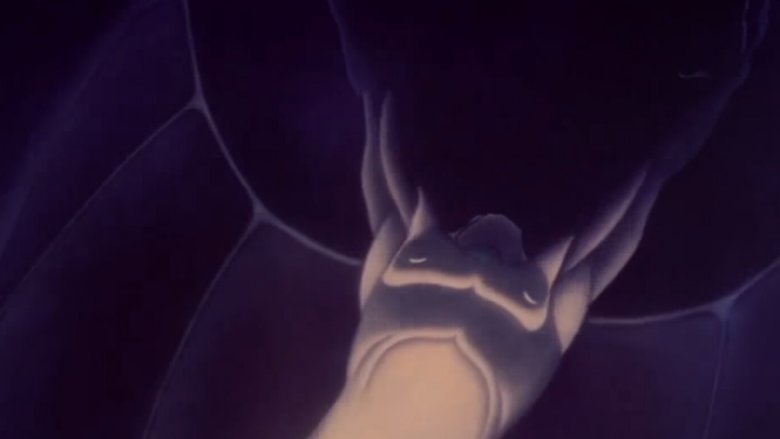Films That Were Rated Totally Wrong
The Motion Picture Association of America wields tremendous power in the film industry. An R rating means a smaller audience, preventing teenagers from buying a ticket without a parent present. Most major theater chains will refuse to screen movies that haven't been rated by the MPAA, or which have been assigned the dreaded NC-17 (meaning minors are not allowed entrance, regardless of parental permission).
Naturally, this system incentivizes both studios and filmmakers to fit their work to the ratings board's standards in a way that will prevent financial losses and failure to reach an audience. Kirby Dick's documentary This Film is Not Yet Rated drew particular attention to the association's strange history in 2007. The anonymity and sometimes inscrutable logic of the MPAA, coupled with the moral implications of cataloging sensitive content, has led to a number of controversies. Here, we've assembled ten examples of ratings that were too strict, too lenient, or just plain strange.
Hunchback's hypocrisy
Disney's animated output between the late '80s and early '90s is referred to as a "renaissance" for good reason. Beginning with The Little Mermaid and culminating with The Lion King, their films racked up critical praise, box office returns, and award recognition unheard of since the era of Walt. Though the years that immediately followed were less successful on any of these fronts, the studio was emboldened to keep breaking new ground. In 2001, for instance, Atlantis: The Lost Empire became the first of their animated features to earn a PG rating since 1985's flop The Black Cauldron.
Atlantis ushered in a new era of PG being the norm for Disney, but just before the turn of the millennium, The Hunchback of Notre Dame snuck through with a pretty inappropriate G. Disney streamlined the intricate plot of Victor Hugo's dense 1831 novel, leaving out large amounts of the text's death and depictions of religious hypocrisy, but not toning it down as much as a G rating suggests. The villain, Claude Frollo (Tony Jay), was changed from an archdeacon to a judge, but retained his religious motivations, even confessing his lust in prayer during the "Hellfire" musical number. Some parents expressed concern, but not enough to hold Hunchback back from financial success.
A harrowing Hobbit
As the final film (for now) in Peter Jackson's two Middle-earth trilogies, The Hobbit: The Battle of the Five Armies holds an auspicious place in film history. It may be appropriate, then, that it broke from tradition with the rest of the series. Each Lord of the Rings and Hobbit film has received an "Extended Edition" that includes more material from J. R. R. Tolkien's books than its theatrical counterpart. The first five of these maintained their original theatrical rating of PG-13, adding only minimal fantasy action and instead focusing on world-building and character arcs.
Battle of the Five Armies, though, made waves among fans when the MPAA announced that the 20 minutes of footage added by warranted a change to R. Maybe it's because so much of Battle is made up of, well, battles, with fewer dialogue-heavy subplots to relieve the action than its predecessors, that the ratings board felt the need to warn audiences. But the severity seems somewhat inconsistent, given that Hobbit fans have likely already seen Return of the King's depictions of severed heads being flung by catapult.
The too-dark Knight
One case of outrage over a movie's rating was so severe it altered the course of an entire multimedia franchise. Tim Burton's Batman became an instant pop culture landmark in 1989 by presenting a more serious take on the Caped Crusader than audiences remembered from the 1966 television show. But while Burton was praised for putting the darkness back in the Dark Knight the first time around, many thought his second outing went too far.
Batman Returns bears the same PG-13 rating as its predecessor, but parents were unprepared for what awaited them in the theater. The MPAA notes that Returns contains "brooding, dark violence," which doesn't sound any different than the action from the first film. They gave no warning that Returns' script (Sam Hamm, who had written Batman, was replaced by Heathers' Daniel Waters) introduced a heavy emphasis on innuendo and psychosexual themes. Additionally, Warner Bros. coaxed Burton back to the director's chair by offering extra creative freedom, and he reveled in this by making the Penguin (Danny DeVito) a grotesque creature with a tendency to ooze black bile.
As chronicled at Den of Geek, the backlash against the perceived inappropriateness made serious waves at Warner Bros. The issue was exacerbated by a McDonald's Happy Meal tie-in promotion that earned extra ire from families. All this controversy, coupled with Returns' disappointing box office, led directly to an agreement between Warner executives and Burton; the reins of the next Batman adventure would be handed over to Joel Schumacher, who delivered the bright neon action of Batman Forever.
Babe's barnyard carnage
George Miller's filmography is vast and varied. He may be best known for revolutionizing action films with all four Mad Max movies, but he has also made significant diversions into family fare with the Happy Feet and Babe series. Miller wrote and produced the first Babe with director Chris Noonan, based on the children's novel The Sheep-Pig by Dick King-Smith. It's a whimsical fable with a heart-warming ending, but its G rating masks some surprisingly dark content.
True to Miller's style, the themes of Babe run deeper than meets the eye. Mortality looms over the barnyard, with most of the characters encountered by the titular sweet young pig reminding him that his "purpose" is to be devoured by his human "bosses." From a duck weeping for the cooked corpse of his beloved to our hero staring down the barrels of a shotgun, death is everywhere. The Academy Awards even took note of Babe's mature themes, nominating it for seven honors, including Best Picture.
Psycho sexuality
It was nearly impossible for American Psycho to not cause controversy. Bret Easton Ellis' novel made waves upon its publication in 1991 for the perceived misogyny in its graphic depictions of violence. When director Mary Harron set out to adapt the book into a film in 1999, she was prepared for backlash against her own take on the material. What surprised Harron, though, was just what part of American Psycho the MPAA found most shocking.
As reported in Variety, the film initially received a rating of NC-17. What kept it from being R wasn't any of the graphic murders committed by Patrick Bateman (Christian Bale), but a single non-violent scene in which Bateman has sex with two prostitutes (Cara Seymour and Krista Sutton). Harron explained why she found the rating objectionable, stating, "That Bateman is looking at himself in the mirror and not at his partners seems to be an issue for the MPAA, but his expression sums up his frighteningly detached relationship to the world around him." She agreed to shorten the scene for theatrical release, but the uncut edition would later be made available on home video.
Boyhood too adult for boys
Richard Linklater's Boyhood is a grand experiment in filmmaking, having boldly pulled off a production unlike any other in movie history. Shot over the course of 12 years, it captures the entire adolescence of a young boy (Ellar Coltrane) as he becomes a young man, the cast aging in real time with their characters. In doing so, the film depicts of a coming-of-age story with greater realism than most stories can dream of.
In fact, it may have been too real for the MPAA. They slapped Boyhood with an R rating for "sexual references and for teen drug and alcohol use." One theater, the IFC Center in New York City, disagreed strongly enough with the rating that they made a point of not enforcing it, advertising the film as "appropriate viewing for mature adolescents." At least one website reporting on the controversy, Hypable, supported the IFC's decision while encouraging concerned parents to open up discussions about Boyhood's content in their comment section.
Rating the reality of Bully
Documentaries present a unique challenge to the MPAA. How does one gauge the age appropriateness of reality? This question has probably never caused more of an uproar than the controversy surrounding director Lee Hirsch's 2011 documentary Bully. Hirsch, who cited his own childhood battles with bullying as a formative experience, made the film in an effort to call attention to issues faced by American children. The MPAA declared Bully an R for language, meaning the exact demographic depicted in the documentary would be unable to see it without a parent, and schools would be unlikely to host screenings.
As documented at CinemaBlend, the decision sparked a debate over the usefulness of the MPAA itself, with Hirsch declaring the system "broken." The Weinstein Company, who produced the film, speculated publicly that they might not submit future releases for rating after their appeal was declined. The discussion even spread beyond the film industry, with Michigan high school student Katy Butler starting a Change.org petition that amassed over half a million signatures. Still, the MPAA refused to budge, and Hirsch eventually prepared a PG-13 version that toned down the language. The original cut was also released, albeit limited to the small number of American theaters willing to screen unrated films.
Ratings are strange
A frequent source of controversy for the MPAA is the blurred line between content notes and moral judgment. Assigning each major motion picture one of just a few possible ratings inevitably leads to comparisons between very different films with similar warnings. Chicago Tribune critic Michael Phillips argued passionately against the "hypocrisy" of the system in 2014.
Phillips' piece was written in reaction to the then-recent release of Love is Strange with an R rating for language. He spoke with director Ira Sachs about the confusion over what specific lines of dialogue crossed the line. Films with similar levels of cursing have been released with PG-13s, Phillips reasons, and categorizing Love is Strange alongside other R ratings implies that it is equally inappropriate for general audiences.
What makes the rating especially contentious is that Love is Strange centers on an aging gay couple, played by John Lithgow and Alfred Molina. Citing the board's history of sensitivity to depictions of same-sex couples, Phillips deduces that the film was "just too gay for the MPAA." He goes on to declare that "the MPAA is a waste of time, money, attention, and exasperation." Phillips is hardly alone, with writers at Slate, IndieWire, and The Guardian also speculating that the Love is Strange controversy is emblematic of a homophobic streak.
A wilder bunch
The MPAA very rarely re-rates films, even decades after their release. If a re-edited version of a film is released to theaters, however, it must be submitted for evaluation. In 1995, Warner Bros. prepared a "Director's Cut" of master western filmmaker Sam Peckinpah's 1969 classic The Wild Bunch that restored ten minutes of material trimmed from the original release for time. A review in the SFGate praised the new release, saying, "The restored material does not call attention to itself. It was there in the first place and it fits right in."
But an unforeseen snag stalled the new cut in the ratings process. While The Wild Bunch, which uses intense editing and graphic slow-motion to examine the effects of violence, was rated R in 1969, the MPAA declared the Director's Cut worthy of an NC-17. Jack Valenti, then president of the MPAA, defended the decision, stating, "In the last decade, there has been a public outrage about violence." Respected filmmakers who were influenced by Peckinpah fought the revisionist rating, knowing that the NC-17 would limit the film's availability. The MPAA eventually relented to an appeal from Warner Bros. and released the Director's Cut with an R, but the incident still stands as an example of the ratings board's imperfection.
Disney's demons
Disney has been synonymous with family entertainment for generations, and the distinction between "family entertainment" and "children's entertainment" is an important one. One of the major keys to the studio's legacy has always been an aim to make films that appeal to all ages. Some skew more adult than others, and we might sometimes forget just how intense certain elements of their early features could be. The MPAA may well have forgotten, too.
Fantasia was Disney's third feature-length animated film, and it remains unique to this day. A marriage of classical music and truly ground-breaking animation, it was designed more for the concert hall than the cinema, as evidenced by the expensive sound system renovations required to run its initial release. The sophisticated spirit of the project freed the filmmakers to appeal even more than usual to an adult sensibility.
They especially didn't hold back in the climactic "Night on Bald Mountain" sequence, which depicts a demonic revelry, with frolicking ghosts, writhing ghouls, and bare-breasted harpies. Nevertheless, when Fantasia was first rated by the MPAA for its 1969 re-release (which, incidentally, was accompanied by a psychedelic ad campaign clearly designed to attract a college counterculture crowd), it was rated G.
